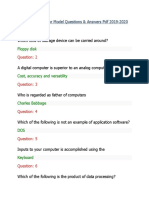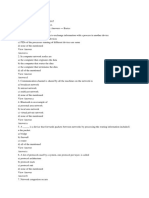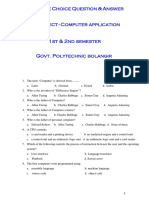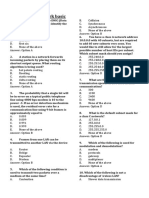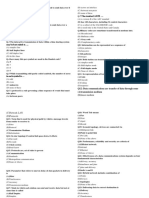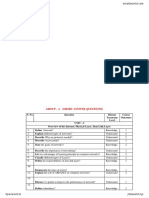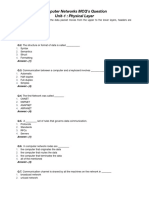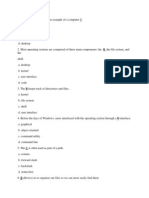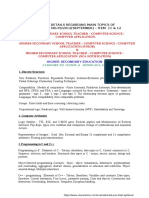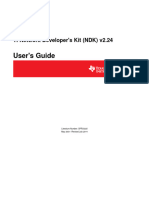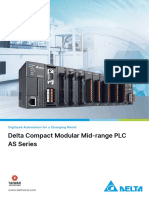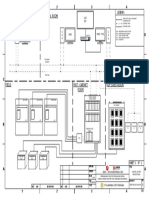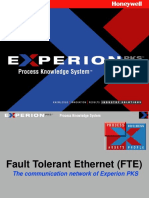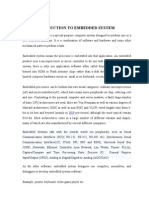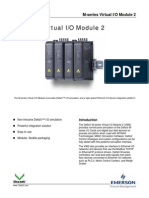0% found this document useful (1 vote)
600 views14 pagesNetworking MCQ
This document contains multiple choice questions (MCQs) about networking concepts for the IBPS IT Officer exam. It includes 32 questions across 3 pages covering topics like network topologies, OSI model layers, TCP/IP protocols, IP addressing classes, Ethernet standards, and more. The questions are followed by explanations of the answers. This set of networking MCQs aims to help exam preparation for the important networking section of the IBPS IT Officer exam.
Uploaded by
Tushar SharmaCopyright
© © All Rights Reserved
We take content rights seriously. If you suspect this is your content, claim it here.
Available Formats
Download as PDF, TXT or read online on Scribd
0% found this document useful (1 vote)
600 views14 pagesNetworking MCQ
This document contains multiple choice questions (MCQs) about networking concepts for the IBPS IT Officer exam. It includes 32 questions across 3 pages covering topics like network topologies, OSI model layers, TCP/IP protocols, IP addressing classes, Ethernet standards, and more. The questions are followed by explanations of the answers. This set of networking MCQs aims to help exam preparation for the important networking section of the IBPS IT Officer exam.
Uploaded by
Tushar SharmaCopyright
© © All Rights Reserved
We take content rights seriously. If you suspect this is your content, claim it here.
Available Formats
Download as PDF, TXT or read online on Scribd
/ 14





